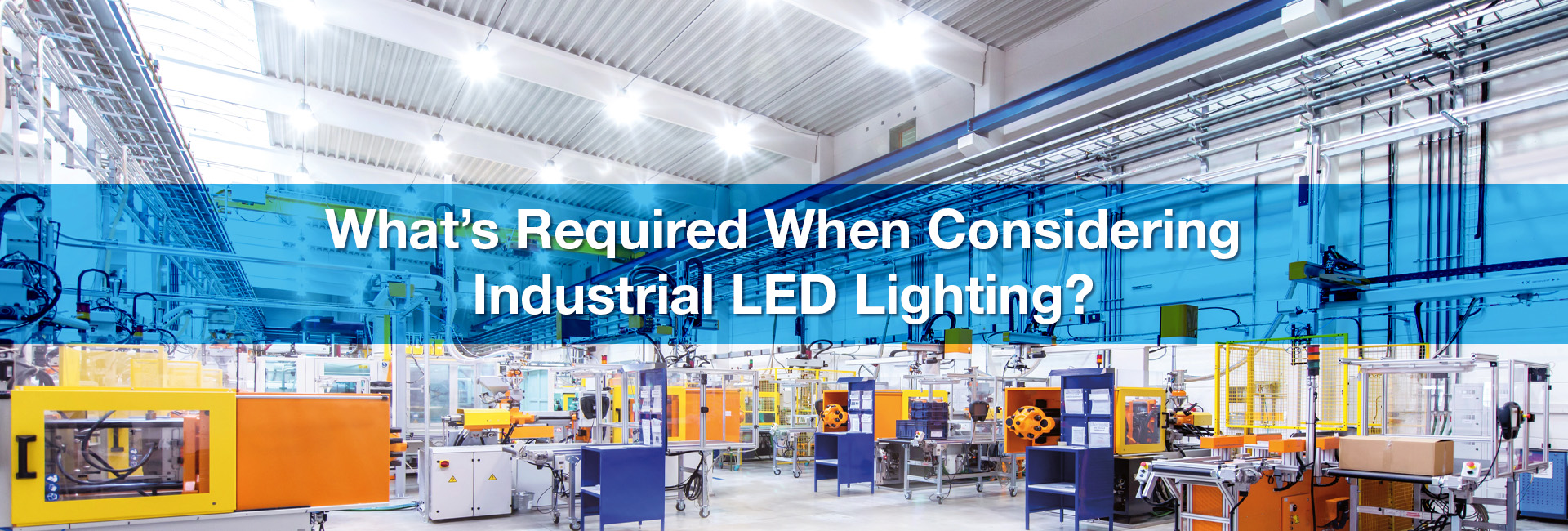
The fitting and maintenance of industrial LED lighting can be expensive and often requires specialist equipment such as cherry pickers to install or change it whenever failures occur, which make fixtures with a high failure rate very unappealing and ones that should be avoided. Although quality industrial lighting can be a higher upfront cost, selecting cheaper options will only lead to additional costs at a later date.
Investing in quality lighting fixtures should also be considered for the health and safety of employees working within warehouses, ensuring that each fixture purchased provides the appropriate lighting levels for each area. We have put together a list of lux levels required in the different areas of an industrial building or warehouse below.
Lighting Level Requirements (Lux) (CIBSE Lighting Guide LG1 - 2018)
- Storage areas where identification requires perception to detail - 150 Lux
- Continuously occupied storage areas where identification requires perception to detail - 300 Lux
- Loading bays - 150 Lux
- Unpacking, sorting - 300 Lux
- Large item storage - 100 Lux
- Small item rack storage - 300 Lux
- Issue Counters and Desks - 500 Lux
Due to the reasons above, when specifying industrial LED lighting it is important to try and get your lighting selection right from the start to avoid any issues.
Aurora’s Highbay Range
Across the UK, there are likely to be thousands of units on industrial and commercial estates in which HID’s are still in place but where an LED solution would make a worthwhile contribution to a company’s bank balance in addition to the nation’s energy saving targets. With affordable, energy-saving industrial LED lighting designed specifically for this type of premises, it is becoming a highly attractive option for many building owners and users and one worth proposing.
By replacing fittings on a one-for-one basis, there’s usually no need for a costly rewire (providing the wiring is still in good condition); and electrical work can be phased as budget and operations permit. Through energy savings of 50%, a typical LED upgrade usually pays for itself in two years and all users benefit.
Traditionally, HID low bay fittings have remained a popular industrial solution but now they’ve been measurably superseded by today’s technology.
Aurora’s Ariah™Pro LED highbays are cost effective, compact in size and reduce maintenance. Ideal for warehousing, manufacturing, conference centres, canopies etc., they offer outstanding energy saving when compared with HID. Efficiency is enhanced even further when combined with dimming or by using daylight and occupancy sensors.
How can Smart Lighting Benefit Industrial Buildings?
With property and energy costs rising globally, warehouses are seeing their bills increase year on year. Additionally companies are under pressure from governments to make buildings more energy efficient to reach 2050 net zero carbon targets. In the UK, the operation of buildings accounts for around 30% of emissions, mainly from heating, cooling and electricity use.
It is also a challenge for many warehouse operations to attract, retain and motivate staff. Introducing automation reduces tedious tasks and makes staff more efficient while accelerating new employee training and familiarisation. Furthermore, it has been proven that lighting can increase productivity, and therefore a smart system that enhances the lighting quality through mimicking natural light is ideal.
A few of the key benefits of a smart industrial LED lighting upgrade in warehouses and logistics companies include the following:
Scheduling for area usage - If areas are likely to be in use for long periods of time during the day, scheduling lighting to automatically turn on and off makes management of these spaces easier. Furthermore, it enables energy savings when it is known that spaces won’t be used at various times of the day.
Light Energy Monitoring - Do you know how much energy each light in your warehouse consumes? Using our Smart Lighting technology your team can monitor and manage the energy consumption of your estate. You can accurately track different strategies to reduce energy consumption.
Sensing & staff detection for light & energy savings - With 30-40% of a commercial building being typically unoccupied at any given time it makes no sense to have lighting on at all times. Therefore, we use sensors in our lighting, along with scheduling capabilities, to enable illumination when the areas are in use.
Analyse historical utilisation trends- When it comes to reporting, using the data accumulated to analyse any trends throughout the building can easily be observed from one dashboard, with the entry of any timeframe that requires analysing.
So when considering lighting for an industrial environment, it’s worth considering all of the above to ensure you get the most in terms of ROI.









